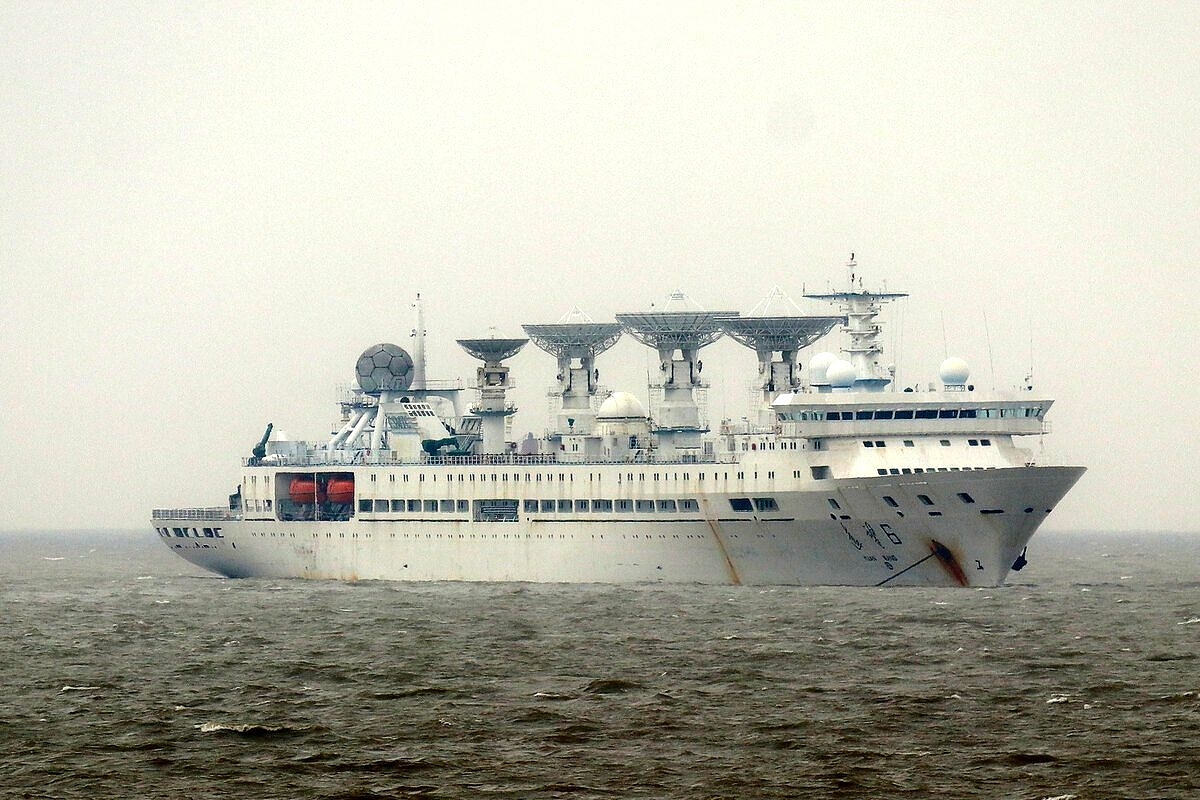News Brief
Chinese Spy Ships May Complicate India's Missile Test Plans In Indian Ocean For The Second Month In A Row

Chinese spy ship Yuan Wang VI
Chinese spy ships may complicate India's plans to test missiles in the Indian Ocean region for the second month in a row.
A Chinese intelligence-gathering ship, Yuan Wang 5, entered the Indian Ocean earlier this month, just weeks ahead of a likely missile test by India in the region. India has notified a no-fly zone, indicative of a missile test, in a large part of the Indian Ocean for 15 and 16 December.
It is believed that India is getting ready to test its K-4 submarine-launched ballistic missile (SLBM) or land-based Agni-V ballistic missile. While the latter has a stated range of 5,000 km, the former is believed to be capable of striking targets up to a range of 3,500-4,000 km.
Equipped with advanced sensors, the Chinese ship can track ballistic missiles and satellites, and is capable of gathering signal intelligence.
Yuan Wang 5, which docked at Hambantota in August this year, causing much disquite in India and Sri Lanka, was last spotted in the region in November, along with another Chinese spy ship named Yuan Wang 6.
The two Chinese spy ships may have forced India to postpone a planned missile test in the second week of that month.
In November, India had notified a no-fly zone for 10 and 11 November. However, it was canceled just days after a Chinese intelligence-gathering vessel entered the Indian Ocean just days before the test.
What is the current location of the Chinese spy ship?
Yuan Wang 5 entered the Indian Ocean through the Lombok Strait, which lies between the Indonesian islands of Java and Sumatra. It is one of the three major chokepoints linking the Indian Ocean with the Pacific Ocean, the Strait of Malacca and Sunda Strait being the other two.
According to MarineTraffic, a website that provides information on the movement of ships, the last reported location of the Chinese spy ship in the Indian Ocean was near the Indonesian island of Bali.
Why is the K-4 test important?
India's only operational ballistic missile submarine (SSBN), INS Arihant, currently carries K-12 SLBMs. With a range of just 750 km, a K-12 fired from an SSBN in the Bay of Bengal can't reach China's industrial or population centres. However, with a range of over 3,500 kilometres, the K-4 missile will give India's SSBNs the capability to strike targets in a large part of China, including Beijing, from the northern region of the Bay of Bengal.
Given its 'no first use' nuclear posture, India needed to demonstrate the capability to launch a second strike or the ability to respond to a nuclear attack with one of its own. An assured second-strike capability is an essential element for effective strategic deterrence.
SSBNs are believed to be the most survivable of the three legs of the nuclear triad. While land-based missiles and aircraft meant for nuclear weapons delivery can be targeted by the enemy in a first, counterforce strike, taking out SSBNs at sea is relatively more difficult. These boats can remain underwater for long durations of time to avoid detection.
In case of a first strike that destroys nuclear weapons and land-based nuclear delivery systems, India can launch a retaliatory strike with its surviving SSBNs. For this, India will need a continuous at-sea deterrent, and the commissioning of the three SSBNs currently in the pipeline — Arighat, S4 and S4* — will give India this capability.
Introducing ElectionsHQ + 50 Ground Reports Project
The 2024 elections might seem easy to guess, but there are some important questions that shouldn't be missed.
Do freebies still sway voters? Do people prioritise infrastructure when voting? How will Punjab vote?
The answers to these questions provide great insights into where we, as a country, are headed in the years to come.
Swarajya is starting a project with an aim to do 50 solid ground stories and a smart commentary service on WhatsApp, a one-of-a-kind. We'd love your support during this election season.
Click below to contribute.
Latest